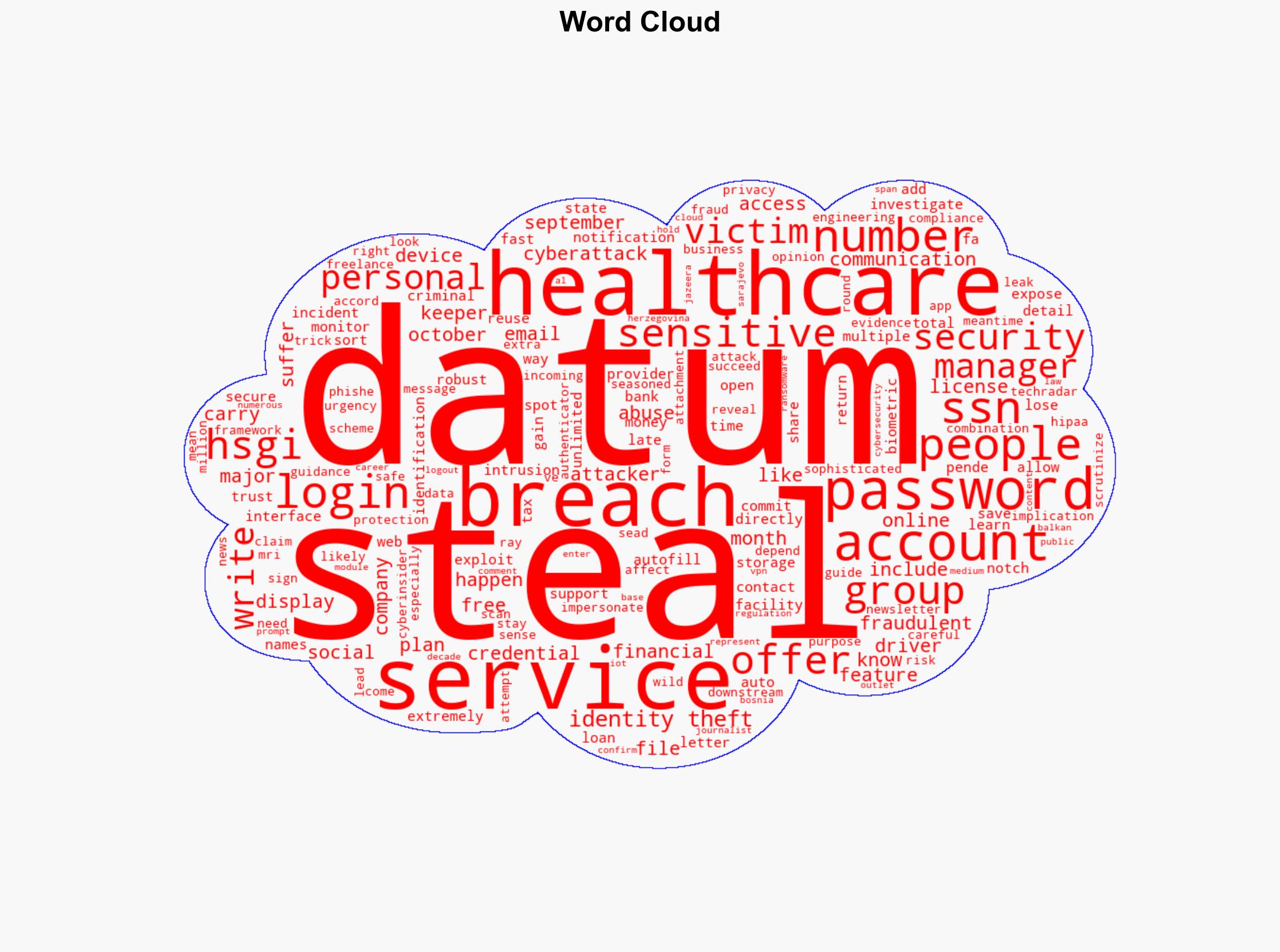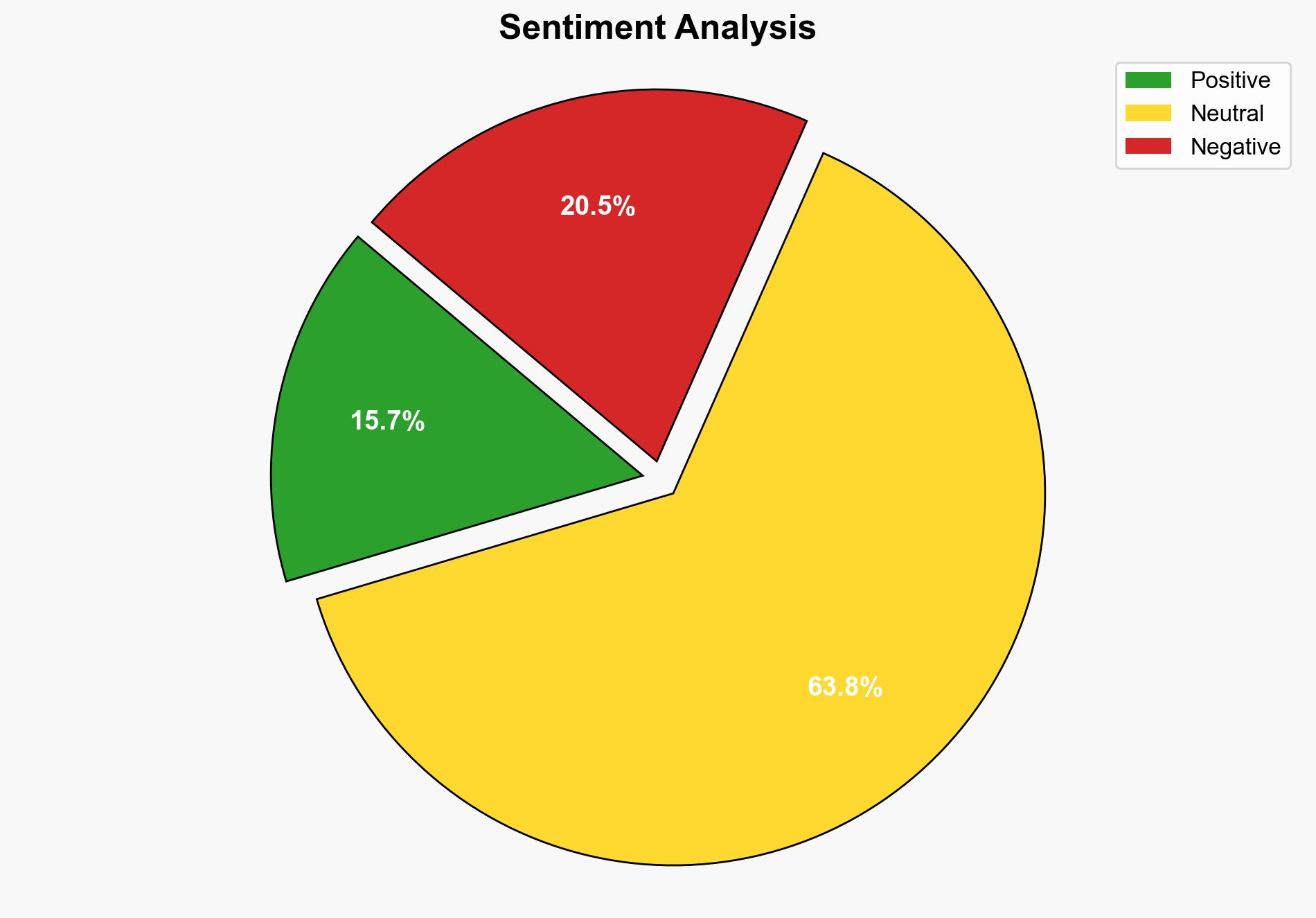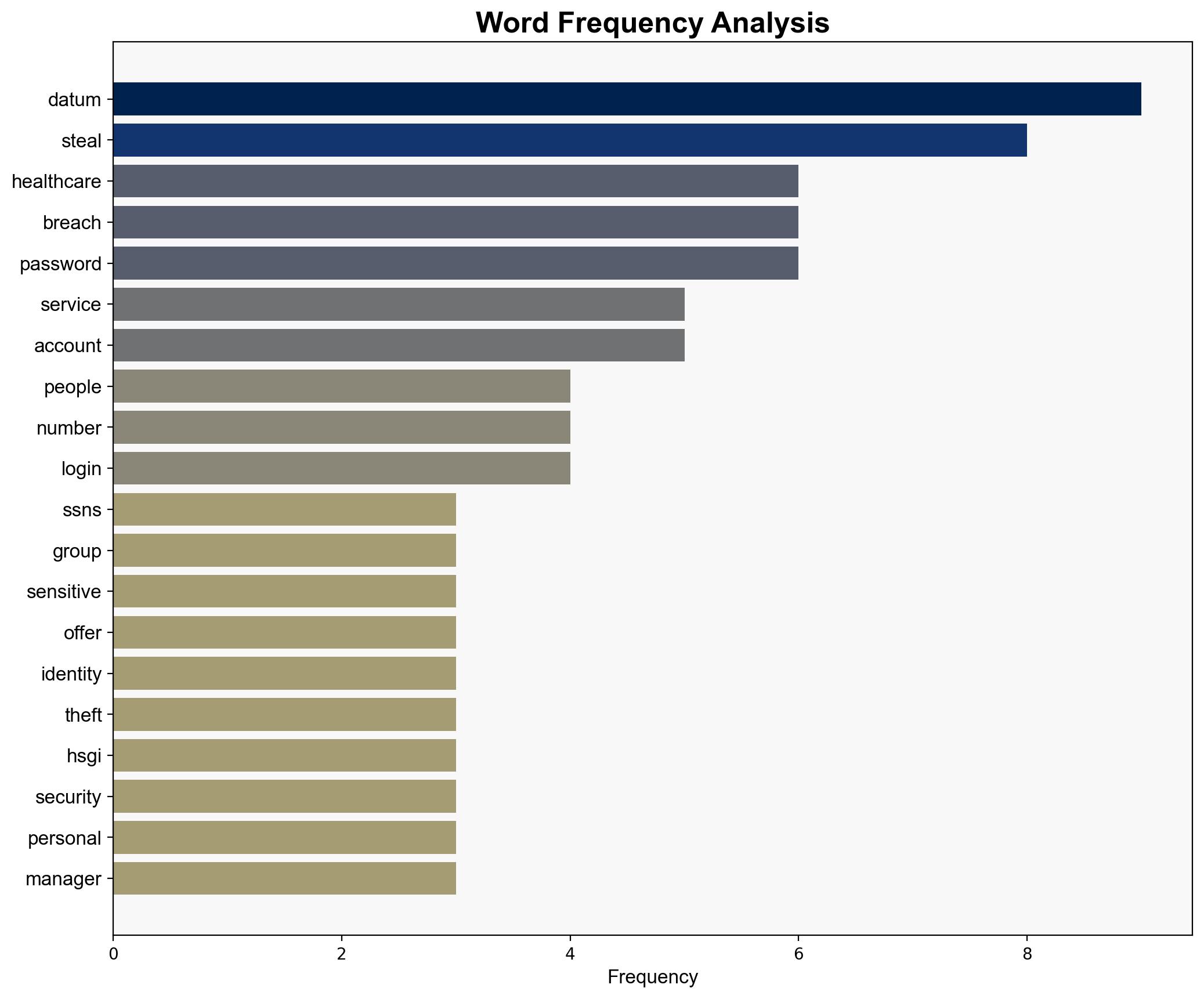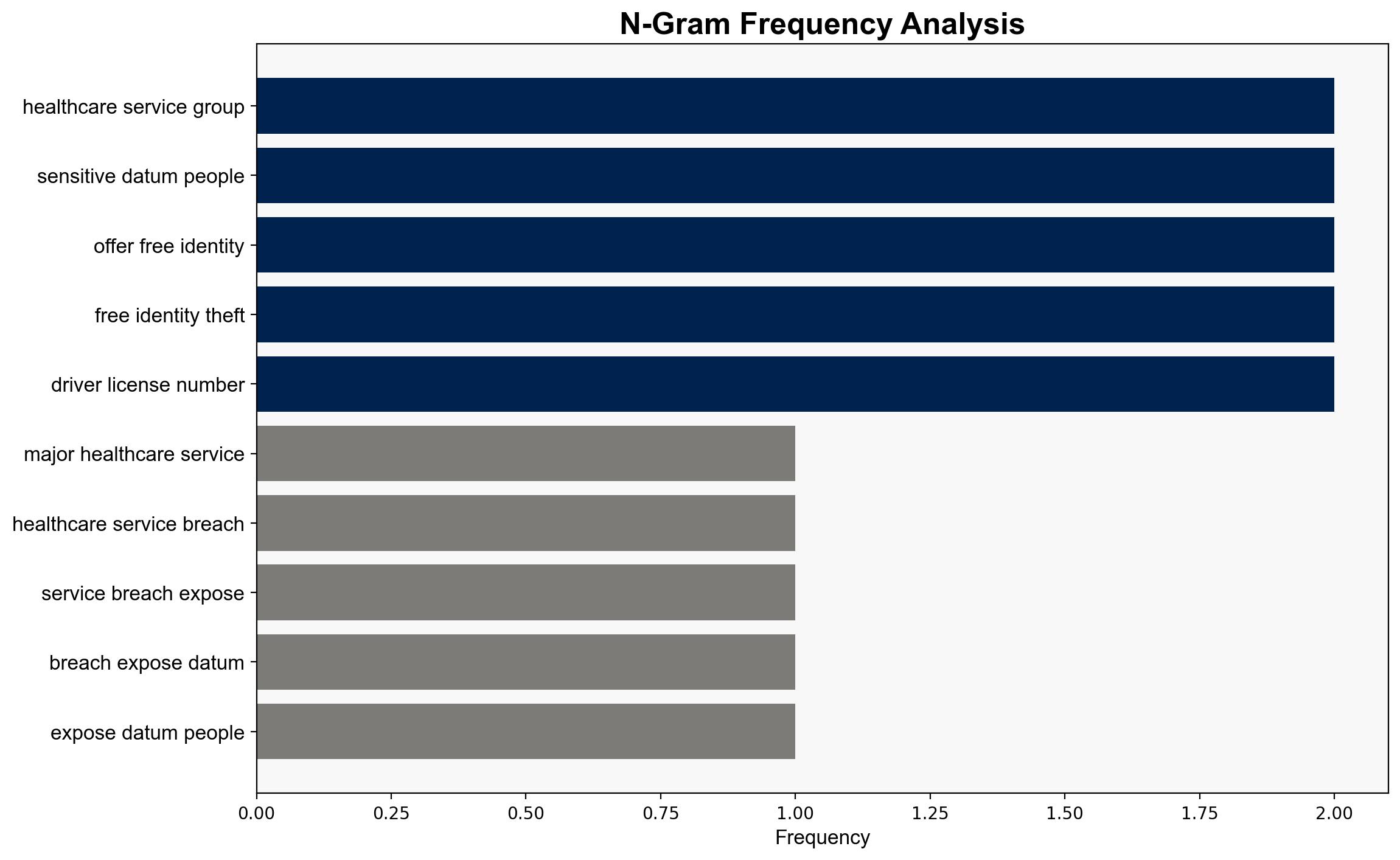Major healthcare service breach exposes data on over 600000 people – names SSNs and more stolen here’s what we know – TechRadar
Published on: 2025-08-28
Intelligence Report: Major healthcare service breach exposes data on over 600000 people – names SSNs and more stolen here’s what we know – TechRadar
1. BLUF (Bottom Line Up Front)
The most supported hypothesis is that the breach was conducted by a financially motivated cybercriminal group exploiting vulnerabilities in the healthcare service group’s cybersecurity infrastructure. Confidence level is moderate due to lack of detailed forensic evidence. Recommended action includes immediate enhancement of cybersecurity measures and offering comprehensive identity protection services to affected individuals.
2. Competing Hypotheses
1. **Hypothesis A**: The breach was orchestrated by a financially motivated cybercriminal group aiming to exploit stolen data for monetary gain through identity theft and fraud.
2. **Hypothesis B**: The breach was part of a state-sponsored cyber espionage campaign targeting sensitive personal data for intelligence purposes.
Using ACH 2.0, Hypothesis A is better supported due to the nature of the stolen data (SSNs, financial account credentials) which are typically targeted for financial exploitation. Hypothesis B lacks supporting evidence such as geopolitical context or patterns of state-sponsored activity.
3. Key Assumptions and Red Flags
– **Assumptions**: It is assumed that the primary motive is financial gain, based on the type of data stolen. Another assumption is that the breach was not detected immediately, allowing for extensive data theft.
– **Red Flags**: Lack of information on the specific vulnerabilities exploited and absence of attribution to a known threat actor raises questions about the completeness of the investigation.
– **Blind Spots**: Potential insider involvement or complicity has not been explored.
4. Implications and Strategic Risks
The breach poses significant risks including identity theft, financial fraud, and potential exploitation of personal data for sophisticated phishing attacks. Economically, it could lead to substantial financial losses for affected individuals and the healthcare service group. Cybersecurity risks may escalate if vulnerabilities are not addressed, potentially inviting further attacks. Psychologically, the breach undermines trust in healthcare providers’ ability to protect sensitive information.
5. Recommendations and Outlook
- Enhance cybersecurity protocols, including regular audits and penetration testing.
- Implement advanced threat detection systems and employee training programs to recognize phishing attempts.
- Offer affected individuals extended identity protection services beyond the initial offer.
- Scenario Projections:
- Best Case: Rapid containment and mitigation prevent further exploitation, and trust is restored.
- Worst Case: Data is widely exploited, leading to significant financial and reputational damage.
- Most Likely: Short-term financial exploitation occurs, but long-term impacts are mitigated through proactive measures.
6. Key Individuals and Entities
– Healthcare Services Group (HSGI)
– Keeper (Password Manager Service)
– Sead (Journalist, source of report)
7. Thematic Tags
national security threats, cybersecurity, data breach, identity theft, financial fraud





